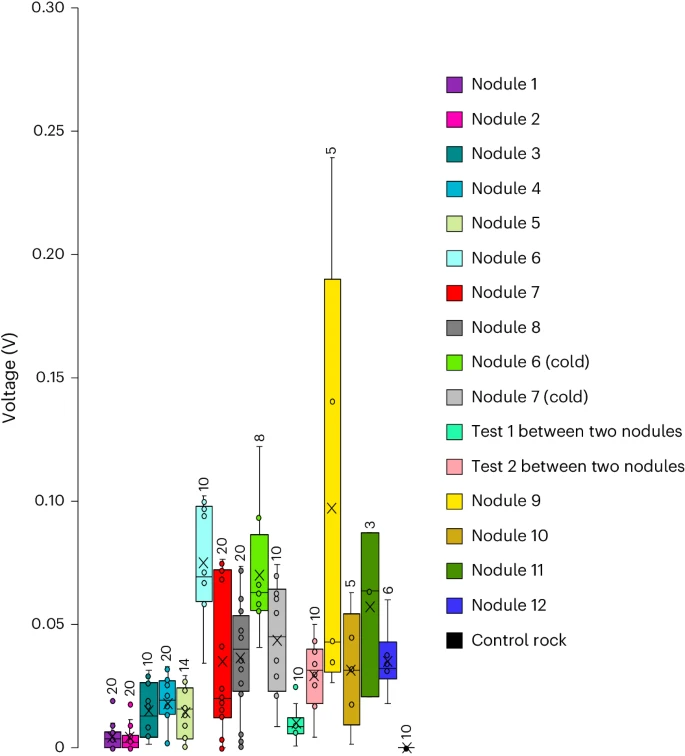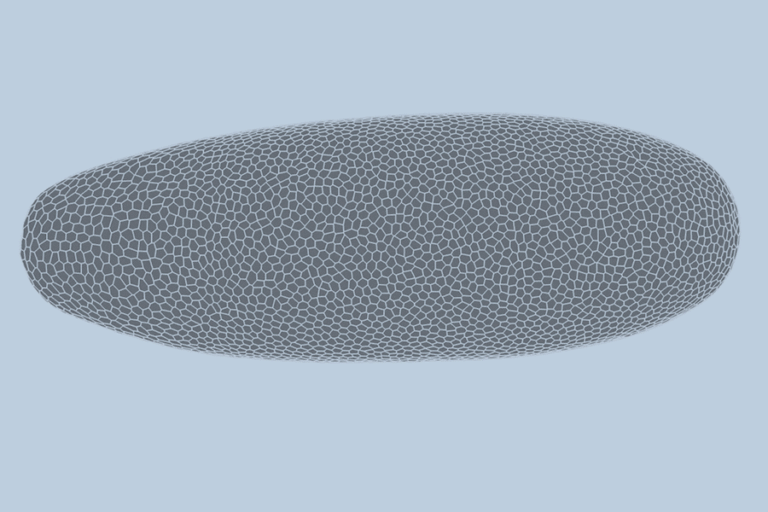Dark Oxygen Production at Abyssal Seafloor

Recently, scientists announced a revolutionary discovery: metallic minerals present on the ocean floor can produce oxygen in conditions of complete darkness, known as “dark oxygen”, challenging the widely accepted notion that the Earth’s oxygenation is exclusively a product of photosynthesis by organisms. The discovery was made at impressive depths of around 4,000 meters below the ocean’s surface, in the Clarion-Clipperton zone in the Pacific, and opens up new perspectives on the origins and production of oxygen on our planet.
The research, led by Andrew Sweetman of the Scottish Association of Marine Science (SAMS), focused on the analysis of polymetallic nodules, deposits rich in metals such as cobalt, copper, lithium, manganese and nickel. These nodules vary in size, from small grains of sand to large baseballs, and are known for their applications in technologies such as batteries. Sweetman and his team were initially perplexed by the levels of oxygen detected in the collected samples, as these readings defied expectations based on the conventional understanding that oxygen is only generated by photosynthetic organisms.
“For aerobic life to begin on the planet, there had to be oxygen, and our understanding was that the Earth’s oxygen supply began with photosynthetic organisms,” explained Sweetman. “But now we know that oxygen is produced in the depths of the sea, where there is no light.”
After years of collection and analysis, and confirmation that the sensors were working correctly, the researchers began to explore other possibilities. Franz Geiger, from Northwestern University, whose previous research had investigated the generation of electricity from rust and salt water, suggested that the nodules could be generating enough electricity to split seawater into oxygen and hydrogen, a process known as electrolysis. During the tests, the individual nodules produced up to 0.95 volts, which is insufficient for electrolysis, but when grouped together, they worked like several batteries connected in series, generating the voltage needed to produce oxygen.
Box and whisker plots of background-corrected voltage potentials on nodule surfaces

The discovery was published in Nature Geoscience and suggests that these nodules function as natural “geobatteries”, capable of sustaining oxygen production for decades. This suggests that there is a potentially rich source of oxygen at the bottom of the ocean, which could have significant implications for marine life and mineral exploration. This new perspective could also redefine our understanding of the origin of aerobic life on Earth, suggesting that oxygen production is not limited to sunlight and photosynthesis.
Initially, Sweetman thought that the detection of oxygen on the ocean floor could have been the result of sensor errors. “We went home and recalibrated the sensors, but over the course of 10 years, these strange oxygen readings kept appearing,” he said.
The discovery raises questions about the environmental impact of deep sea mining. Geiger and Sweetman warn that mining activity could compromise this vital source of oxygen. Previous studies have shown that mined areas on the ocean floor do not recover marine life even after decades, with zones remaining deserted, with no signs of life, including bacteria. In contrast, unmined regions continue to flourish with a rich and varied biodiversity.

In a statement, Geiger pointed out: “In 2016 and 2017, marine biologists visited sites that were mined in the 1980s and found that not even bacteria had recovered in the mined areas. In the unmined regions, however, marine life flourished.” Why these mined portions of the ocean floor remain true “dead zones” for decades remains a mystery.
This puts a big question mark over current underwater mining practices. The biodiversity in the polymetallic nodules of the Clarion-Clipperton Zone is remarkably rich, comparable to tropical rainforests in terms of species variety. This suggests that any significant human intervention could have devastating consequences, destroying complex ecosystems that have taken millions of years to develop.
Geiger emphasizes: “We need to rethink how we mine these materials, so as not to deplete the source of oxygen for life in the deep sea.”
Sweetman and Geiger’s research not only challenges our knowledge of oxygen production, but also calls us to rethink strategies for exploiting and preserving marine resources. The possibility that polymetallic nodules are crucial to the maintenance of marine oxygen highlights the urgent need to develop more sustainable mining practices that can balance the exploitation of natural resources with the protection of marine life.
This discovery opens up a new field of research into the biogeochemical mechanisms that sustain life on the ocean floor and the interaction between geology and marine biology. The future of ocean exploration and the preservation of its biodiversity depend on how we choose to apply this new knowledge, ensuring that we can continue to exploit and value the sea’s resources without compromising its ability to sustain life.
The new paper by Sweetman, Geiger, et al, “Evidence of dark oxygen production at the abyssal seafloor,” appeared in the journal Nature Geoscience.






